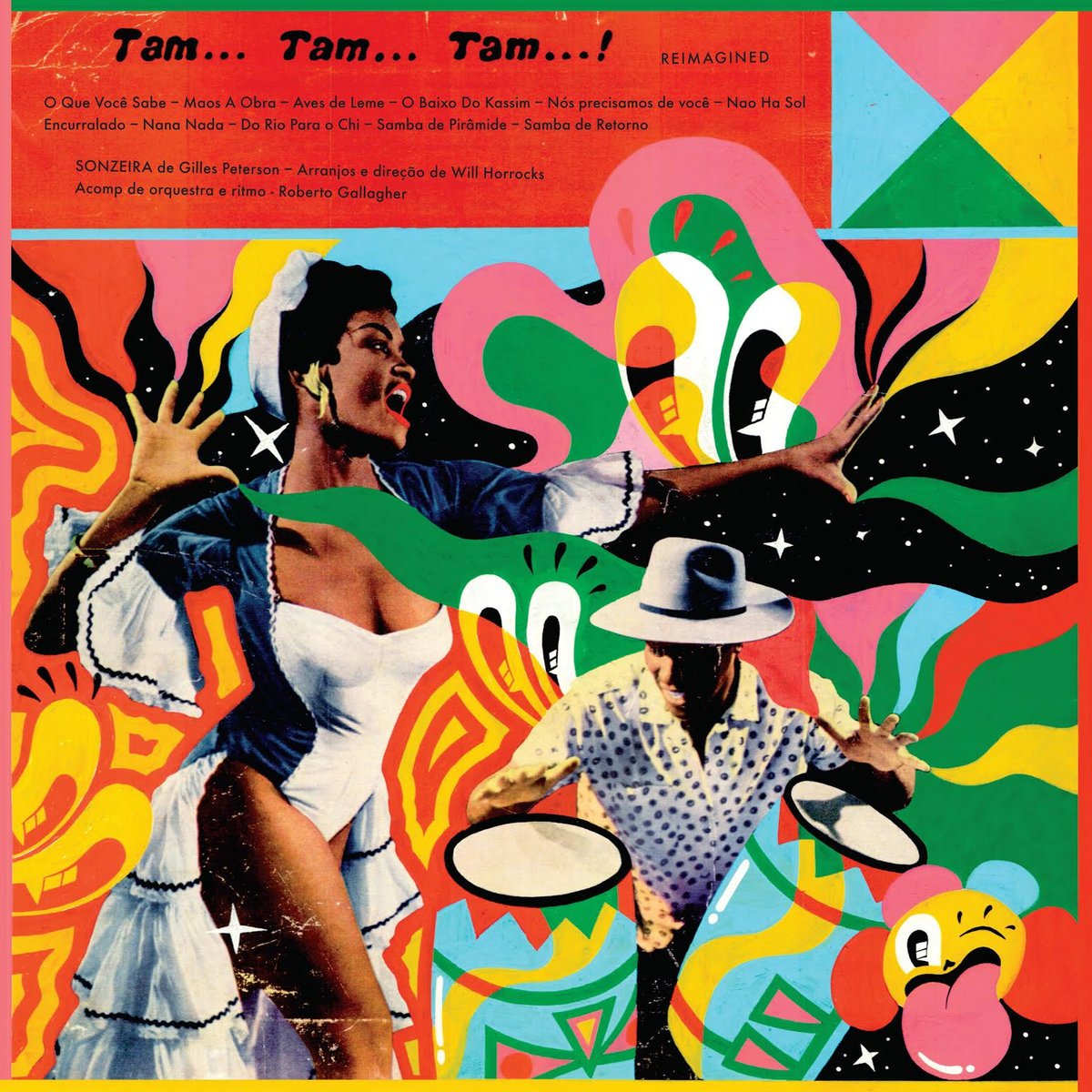Tam Tam Tam Reimagined, well, reimagines a classic Brazilian music, from Jose Prates’ Tam Tam Tam, into the second volume of Gilles Peterson’s Sonzeira project (the first release was Bam Bam Bam.) The original Tam Tam Tam was an album of lively drumbeating, band playing, and singing, that sounds like it was recorded in a forward thinking Terriero hosting a big band, women in traditional white dresses and head dresses ready for the arrival of an Orixa. The cover of Tam Tam Tam featured a woman wearing white (and a bit of blue,) and so does Tam Tam Tam Reimagined. To the album’s cover, Peterson has added pop.
Both Tam Tam Tam and Tam Tam Tam Reimagined are pretty good, but for different reasons. The original was very traditional sounding with a choir-like quality to its singing. It had old world backbone and provoked the sort of exclamation that marvels in New Orleans Jazz would. The first six songs, “Ogum Olojo” being the most memorable of them, were religious songs. The five songs that followed (side B of the original vinyl) were big band style entertainers, lover’s discourse to quote Roland Barthes, except for one religious, Batuque, song, “De Luanda-o.”
Peterson replaces the religiosity of Tam Tam Tam with spirituality and brings its “lover’s discourse” into the 21st century. No longer is this music for the Orixas, not Yemaya, not Omolu, nor Xapana. He, along with Will Horrocks, Rog Gallagher, Moses Boyd, and Kassin, repurpose bits and pieces of Tam Tam Tam into new songs, with new titles, like “O Que Voce Sabe”, expressly produced for nights of vivre sa vie.
Tam Tam Tam Reimagined has an operatic quality to it that religion, religious mythology especially, seems to always have, and perhaps religion is being reimagined into lyric-less operatic spirituality. The songs are avant-garde gems; they are kind to a listener in the end. “Samba de Retorno” is phenomenal and so is “Maos a Obra” but “O Que Voce Sabe” began the album so well that it was the most impressive.
Finding one’s way around Brazilian music often requires one to contemplate Brazilian principles. Beauty is surely one of them, the importance of motion as opposed to immobility is another. Elegant fluidity is a third on a list. When it’s Samba, it’s almost an ideology of identity that one finds one’s self listening to.


